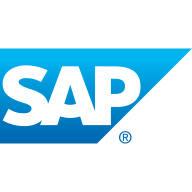

Find out what your peers are saying about Microsoft, Salesforce, Oracle and others in Reporting.
We are satisfied with the technical support from SAP because when we reached out, we were able to get very good support from SAP colleagues.
I would rate its scalability up to nine on a scale of one to ten.
Documentation-wise, we see some gaps when trying to connect different solutions.
For SuccessFactors and S/4HANA Cloud, there are pre-built reports available which are commonly used by customers.

Birst Networked BI and Analytics eliminates information silos. Decentralized users can augment the enterprise data model virtually, as opposed to physically, without compromising data governance.
A unified semantic layer maintains common definitions and key metrics.
Birst’s two-tier architecture aligns back-end sources with line-of-business or local data. Birst’s Automated Data Refinement extracts data from any source into a unified semantic layer. Users are enabled with self-service analytics through executive dashboards, reporting, visual discovery, mobile tools, and predictive analytics. Birst Open Client Interface also offers integration with Tableau, Excel and R.
Birst goes to market in two primary ways: as a direct sale, for enterprises using Birst on internal data to manage their business; and embedded, for companies who offer analytic products, by embedding and white-labeling Birst capabilities into their products.
Birst’s is packaged in 3 available formats: Platform and per-user fee; by Department or Business Unit; by end-customer (for embedded scenarios).
SAP Analytics Cloud is an all-in-one Software-as-a-Service business intelligence tool that provides the key functionalities of an analytics tool to SAP business users. This tool is built on HANA Business Intelligence (BI) platform, providing analytics from data collected from multiple sources, such as ERP, Microsoft SQL, and Salesforce, among other solutions.
You can use SAP Analytics Cloud to compile data and perform ad-hoc reporting and analysis for predictive planning. SAP Analytics Cloud collects and analyzes the raw data from transactional systems into intelligent insights that allow you to make better decisions.
SAP Analytics Cloud uses machine learning to clean up data, identify errors, and issues, and suggest optimization or filtering options. You can use the modeling feature in Analytics Cloud to create hierarchies and get deeper data insights.
The three core functions of SAP Analytics Cloud consist of Planning, Predictive Analysis, and Business Intelligence as a holistic SaaS solution that offers real-time analysis to business leaders.
SAP Analytics Cloud Capabilities
SAP Analytics Cloud Key Features
SAP Analytics Cloud Benefits
Reviews from Real Users
Segun O., SAP HANA Developer at SOA PEOPLE, says that "The most valuable features are on the application side, where you can design applications into your analytics on the platform."
The Head of Finance Enterprise Application at a computer software company adds that "The visualization feature is the most valuable. SAP Analytics Cloud is also very easy to use."
"Its many features make it the best in the market," sums up a Consultor SAP Business Object, Sap Analytics Cloud at a tech services company.
We monitor all Reporting reviews to prevent fraudulent reviews and keep review quality high. We do not post reviews by company employees or direct competitors. We validate each review for authenticity via cross-reference with LinkedIn, and personal follow-up with the reviewer when necessary.